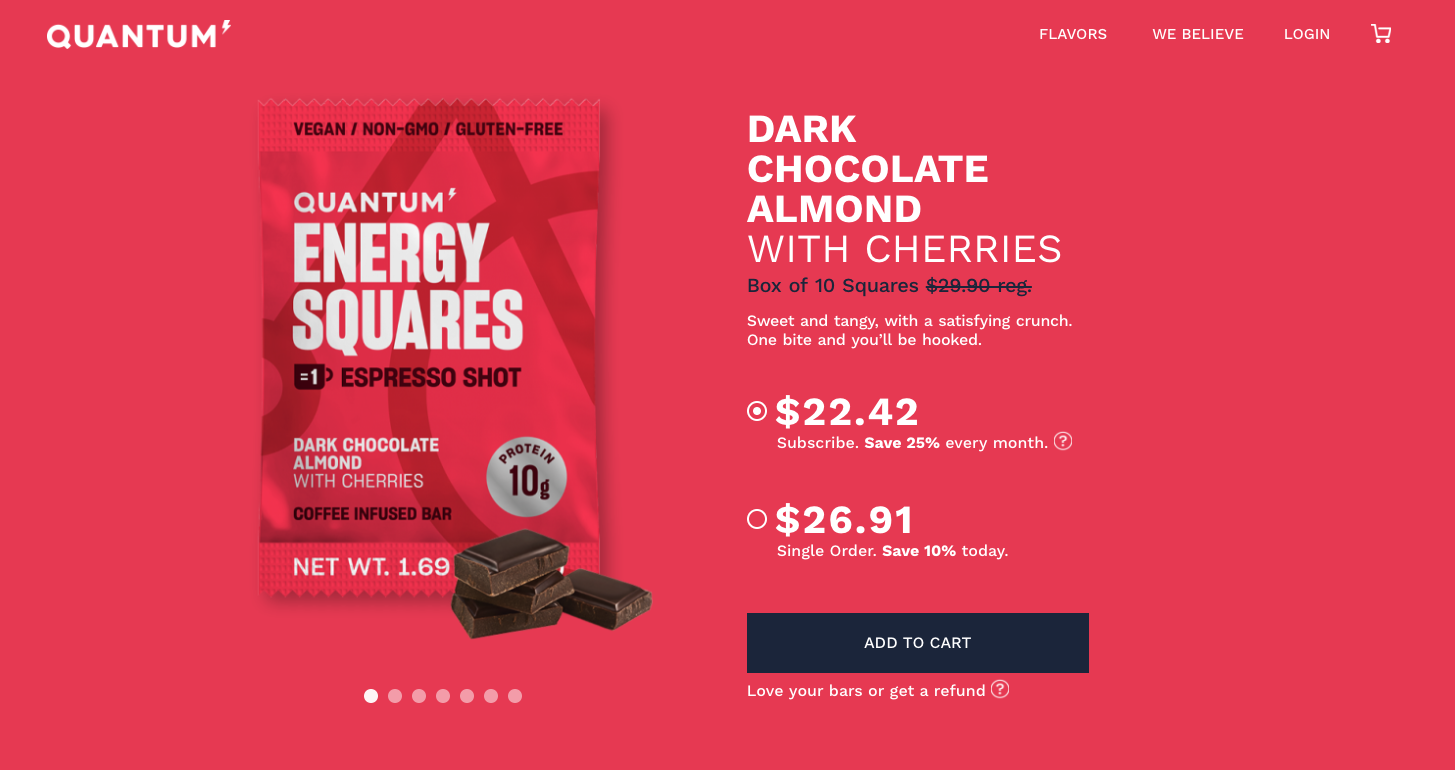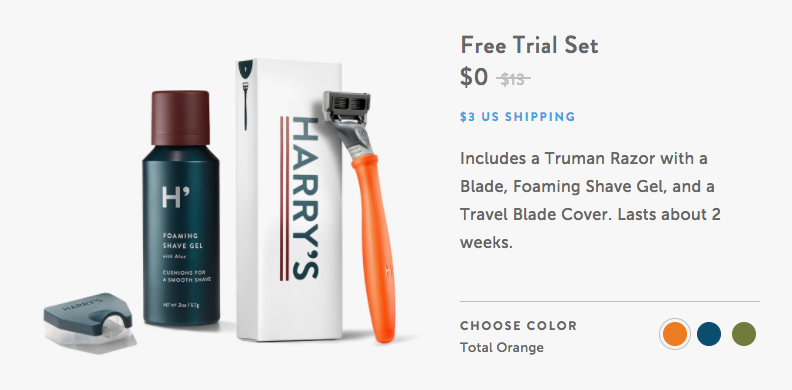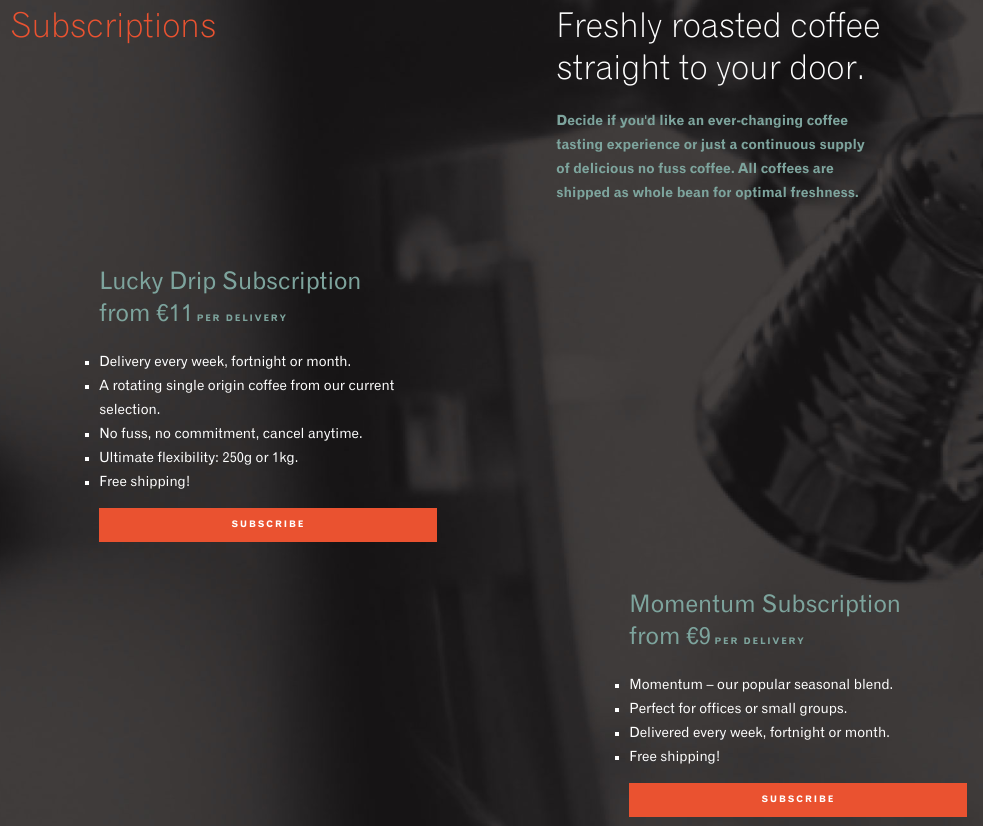You know how important it is to listen to your customers and understand their needs. Taking the extra steps, going the extra mile, it’s all part of the customer relationships you’ve built over the years. But is it enough lately? Does your eCommerce model place enough emphasis on reaching repeat customers? Are your follow-up emails getting opened? Are these customers coming back to shop with you again?
If you’re working overtime using traditional methods to convert these transactional customers into long-lasting buyers, then it might be time to consider adding an eCommerce subscription model to the mix and creating new streams of recurring revenue on top of your one-time purchase sales. Subscription models are the perfect mix of meeting your customer’s recurring needs, while satisfying your business demands of regular income and growth.
The eCommerce Subscription Model Growth Opportunity
Online retail is expected to grow from $415 billion in 2018 to about $525 billion by 2020. And online retail subscription offerings will certainly fuel that growth. Sales are booming in this segment, having grown from just $57 million in 2011 to over $2.6B in 2016. That is consistent growth of >100% every year, and this growth is expected to continue for the foreseeable future.
Both consumers and retailers are taking note:
- Retailers everywhere are trying to better understand always-shifting consumer tastes, according to experts in this recent CNN article.
- Major apparel retailers like J.C. Penney, Target, Walmart, and others are exploring subscription-based models.
- A new McKinsey & Company report shows that about 15% of online shoppers have signed up for one or more subscriptions to receive products on a recurring basis, frequently through monthly boxes.
Subscribe & Save
Maybe you’ve heard about the new “Subscribe & Save” retail subscription model from Amazon, the online retail behemoth that captured about 44% of all U.S. eCommerce sales in 2017. This subscription option lets Amazon deliver many recurring household needs, from baby care goods to beauty and personal care items, automatically every month. Amazon will discount your goods 15% if you subscribe and buy five or more products monthly. Prime members get 20% off these prices. Free shipping is included and shoppers can cancel anytime for free.
If you’re in online retail, you’ve got to be thinking about offering subscription options. At LemonStand, we’re seeing an increasing number of our online retailers offering subscription options (some examples below). They have moved from being traditional online businesses that offer one-time purchases to a mixed business model with recurring subscription options. This is helping them convert many of their current repeat customers into a consistent recurring revenue stream, and also enabling them to attract new customers looking for something a bit different.
If you’re already had some preliminary thoughts to go the subscription route, here are some questions to consider:
- How might you get started with your subscription model? Do some or all of your products make sense to offer on a recurring basis? Do your customers often repeat order already?
- How are you retaining your customers and ensuring repeat orders now? Your business needs to find ways not just to attract customers, but to retain customers and ensure repeat orders over time—a recurring subscription can be the answer.
- What are your current metrics for customer acquisition and profitability? Would adding subscription options enable you to improve them?
Let’s take a look at the benefits of eCommerce subscriptions, both for retailers and consumers.
Benefits For Retailers
- Ability to analyze sales data on their product offerings. Incoming data on purchases can help you see what’s already being repeat ordered by customers and aids in figuring out what to offer on a subscription basis.
- Forward visibility on inventory. Adding a recurring subscription option can help retailers prevent over- or under-stocking products.
- Offers a more predictable monthly revenue stream that can be built upon to drive faster growth.
- Helps lessen merchandise returns. Consumers are less apt to return goods they have chosen to subscribe. The latest estimates show about 30% of goods bought online are returned, compared to about 9% for physical store products.
- Helps companies increase the lifetime value of a customer. By maximizing the lifetime value of your customers, retailers can also minimize the cost of customer acquisition, and this could mean more profits down the line.
Benefits For Consumers
- Convenience. Items are delivered to their door with no need to remember and go out to pick them up on a repeated basis.
- Flexibility. They have the ability to adjust subscription preferences, timing, product selections, etc. to meet their needs, all done from the comfort of their home computer or mobile device.
- Novelty. Curated “box”-type subscription models can delight consumers by tailoring a sample of products to their tastes that they might never have found or tried on their own.
- Cost savings. They can take advantage of discounts for signing up and ordering products on a recurring basis.
Recurring Subscription Examples
While there are a number of high-profile subscription box/subscription-only businesses (like Dollar Shave Club, Birchbox, and others) we thought it would be great to share some examples of businesses of all different types and sizes that have added recurring subscription options to their offerings.
Quantum Squares
This LemonStand customer sells caffeinated, protein-packed energy bars. The company offers one-time sales as well as subscribe and save options.
Harry’s Razors
A key player in the men’s shaving segment, Harry’s Razors offers razors, blades, and shaving gear on a one-time basis or you can upgrade to a subscription package to get your blades on a recurring basis.
3FE
This LemonStand customer sells coffee beans, brewing equipment, etc. to coffee enthusiasts, and also offers options for subscription deliveries of beans.
Subscription Model Best Practices
After reading about the benefits above, maybe you’re ready to explore this opportunity. After all, what retailer worth its salt wouldn’t want to turn a one-time customer into a consistent repeat customer, forecast a monthly recurring revenue stream, get better control over inventory and margins, and learn more about its customers?
Here are some practical, achievable next steps you can take to launch your own eCommerce subscription model.
1. Dig into your existing customer personas and buying habits.
If you’re looking to extend a customer’s lifetime value through subscriptions, then spend some time researching your existing customers. Develop personas of your customers. Map out who these shoppers are, what their buying habits are, and what the most obvious products in your catalog are to add subscription options for.
2. Make it easy and convenient.
For any subscription model to work well, it’s important you focus on customer ease and convenience in your eCommerce model. You want your early adopters to arrive early, purchase, and stick with you. Avoid difficulty on the site or in the process. By making the flow an easy one for your customers, and giving them self-service options for managing their subscription, you’ll stand a better chance of turning them into evangelists to others.
3. Start with your existing customers.
If you’ve already got customers, then you have a ready-made target for your new subscription offering. Create incentives to sign up (ie. discounts on their first order, free shipping, or even a recurring discount) and then get the word out via your email newsletter and social media channels. You can even add a retargeting campaign for previous customers if you’ve got tracking set up. Once you have early success with your existing base of customers, you can expand to other channels for new customer acquisition.
4. Offer fewer options.
Your subscription model should focus on fewer consumer choices and easier decision making. Don’t overwhelm customers with too much choice or complicated selection options if you don’t have to. This clears the way for happier customers, higher retention rates and fewer product returns.
5. Delight the customer by delivering on the promise.
Make sure you focus on delivering a great experience for your new subscribers. They should get what they expect, when they expect, and how they expect. If there are any issues, make sure you’re proactive in communicating. And learn as much as you can from your early customers’ feedback to help you improve your offering and service over time. This can only help you grow faster.
6. Ask early customers to evangelize.
If you’ve delivered on the promise, ask your customers for testimonials, reviews, and other positive feedback to help you get the word out. Nothing helps you attract new subscribers better than positive feedback from real customers who are already signed up.
Get Started Now
Clearly, an opportunity exists for established online retailers to consider adding an eCommerce subscription model to grow faster and make their customers even happier. Don’t wait for your competitors to beat you to the punch—take the steps now to open up your product offerings to subscription possibilities.
Ross Paul is the VP, Growth at LemonStand, a refreshingly customizable eCommerce platform with built-in support for standard one-time and recurring subscription purchase options.
Related Resources:
BlueSnap’s Ultimate Guide to Cross-Border Payments
More Related Resources:





